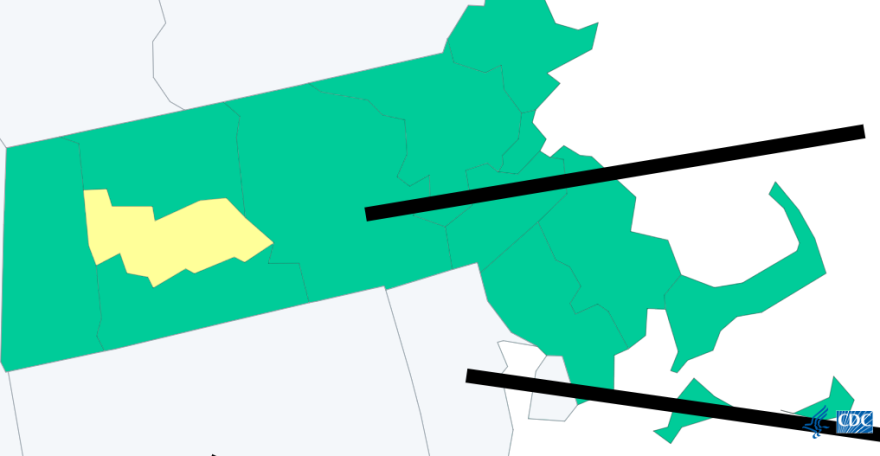Massachusetts is a swath of healthy green on the Centers for Disease Control and Prevention's latest community-level color-coded map of COVID-19 cases — except for Hampshire County.
Hampshire is the only county in the state where COVID-19 levels poke up high enough in the seven days before March 3 to paint it yellow, designating a medium "COVID-19 community level" on the CDC map. The county had nearly 218 cases per 100,000 people.
Data posted by the state, based on a 14-day average, also shows Hampshire County with the highest incidence rate. There were 92 cases in Amherst, home to UMass.
The university dropped its mask mandate, effective Wednesday, leading to criticism from the UMass staff union and some professors.
The other metrics the CDC considers are the hospital admissions per 100 thousand people. Berkshire, Franklin and Worcester counties have the highest COVID hospital admission rates in the state. Berkshire, Hampden and Hampshire counties have the highest percentage of inpatient beds that are occupied by patients with COVID-19.
But only Hampshire County is rated higher than the lowest level.
Vivian Franklin, a public health nurse in the Northampton, said anything related to the pandemic is more nuanced than a color-coded map.
"We're still having cases," Franklin said. "They are far fewer than we were having, but it's still making its way around. The risk is not eliminated altogether at this point."
Franklin said people should think about their own risks when making decisions. If living with somebody who is at high risk, she said, "you should absolutely still be taking precautions."
The CDC recommends in places like Hampshire County, with medium COVID community levels, people keep up to date with vaccines and boosters and "maintain improved ventilation throughout indoor spaces when possible." The agency also recommends people who have contact with "someone at high risk for severe disease" consider wearing a mask and self-testing before spending time with them.
The agency also suggests individuals who are at high risk or who are immuno-compromised talk to their health care providers about masking and about whether they're "a candidate for treatments like oral antivirals, PrEP, and monoclonal antibodies."










